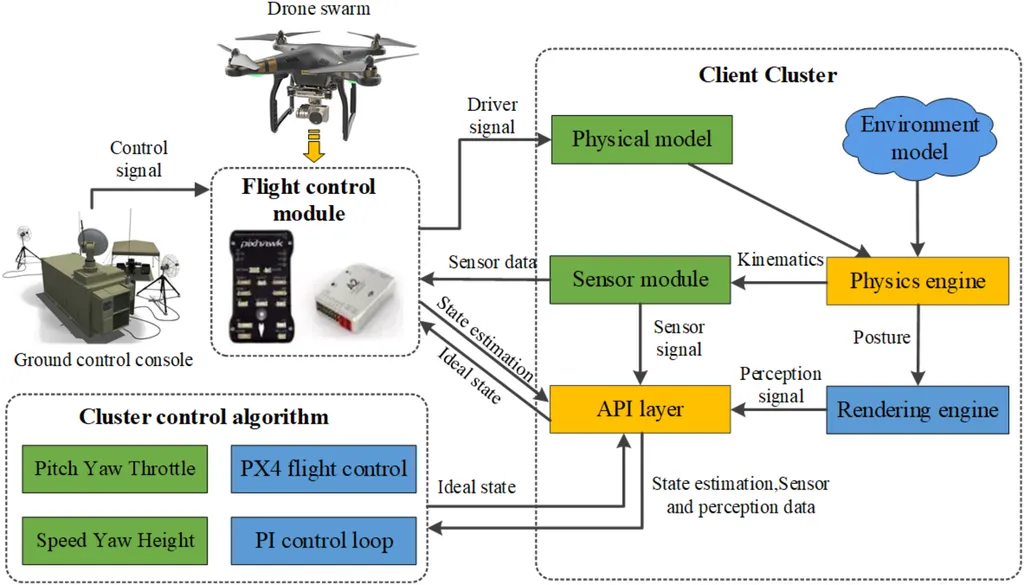Researchers Tiago Silva and António Grilo, affiliated with the Instituto de Telecomunicações and the University of Porto, have pioneered a novel approach to enhance the resilience of Unmanned Aerial Vehicle (UAV) swarms against communication jamming. Their work, published in a recent paper, explores the use of Genetic Algorithms (GAs) to optimize various aspects of UAV swarm behavior to mitigate the effects of jamming, a significant vulnerability in swarm operations.
UAVs have revolutionized military tactics, offering unprecedented advantages in surveillance, reconnaissance, and combat operations. When deployed in swarms, these unmanned aerial vehicles can collaborate and support each other, significantly expanding their capabilities. However, the effectiveness of UAV swarms hinges on their ability to communicate and coordinate actions. Adversaries can exploit this dependency by jamming the communication channels, disrupting the swarm’s operations and rendering them ineffective.
Silva and Grilo’s research addresses this critical challenge by proposing a GA-based approach to optimize UAV swarm formation, beam-steering antennas, and traffic routing. The goal is to create a more robust communication network that can withstand jamming attacks. The researchers assume the existence of a more robust and low data rate channel for formation management signaling, focusing their efforts on protecting the main coordination channel.
The proposed approach involves using GAs to evolve optimal solutions for the UAV swarm’s configuration. GAs are a class of optimization algorithms inspired by the process of natural selection, making them well-suited for complex, multi-dimensional optimization problems. By applying GAs to the problem of anti-jamming UAV swarm behavior, Silva and Grilo aim to identify configurations that minimize the impact of jamming on the swarm’s communication network.
The researchers’ simulations demonstrate the effectiveness of their approach, showing that the optimized UAV swarm configurations can significantly improve the resilience of the communication network against jamming attacks. This enhanced resilience translates to more reliable and effective UAV swarm operations in contested environments.
The practical applications of this research for the defence and security sector are substantial. UAV swarms are increasingly being considered for a wide range of military and security applications, from intelligence, surveillance, and reconnaissance (ISR) to electronic warfare and strike missions. By enhancing the resilience of UAV swarms against jamming attacks, Silva and Grilo’s research could significantly improve the effectiveness of these systems in real-world operations.
However, the researchers acknowledge that their approach comes with a significant computational cost. This cost could limit the practical applicability of their method, particularly in time-sensitive scenarios. As such, they call for further research to address this challenge and explore ways to reduce the computational overhead of their approach.
In conclusion, Silva and Grilo’s research represents a significant step forward in the development of anti-jamming techniques for UAV swarms. By leveraging the power of Genetic Algorithms, they have demonstrated a promising approach to enhancing the resilience of UAV swarms against communication jamming. While challenges remain, their work paves the way for further research and development in this critical area.
This article is based on research available at arXiv.

